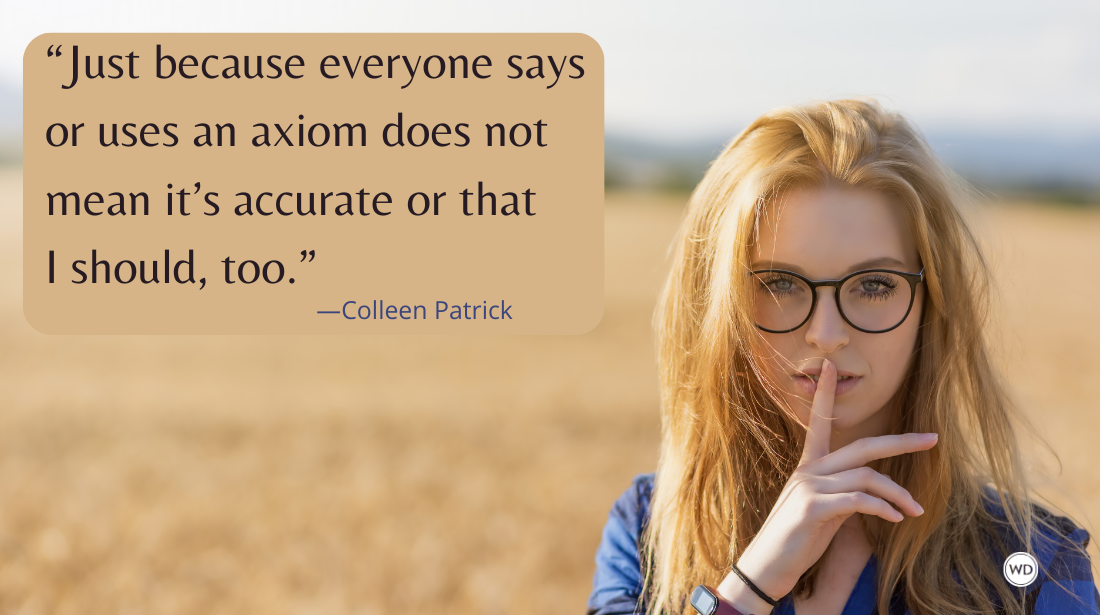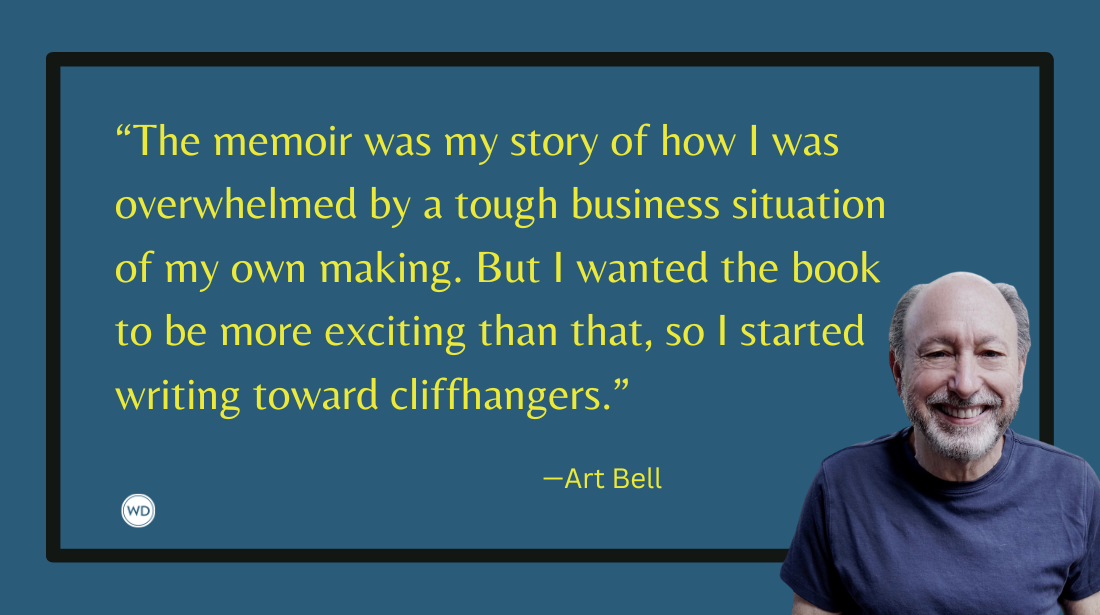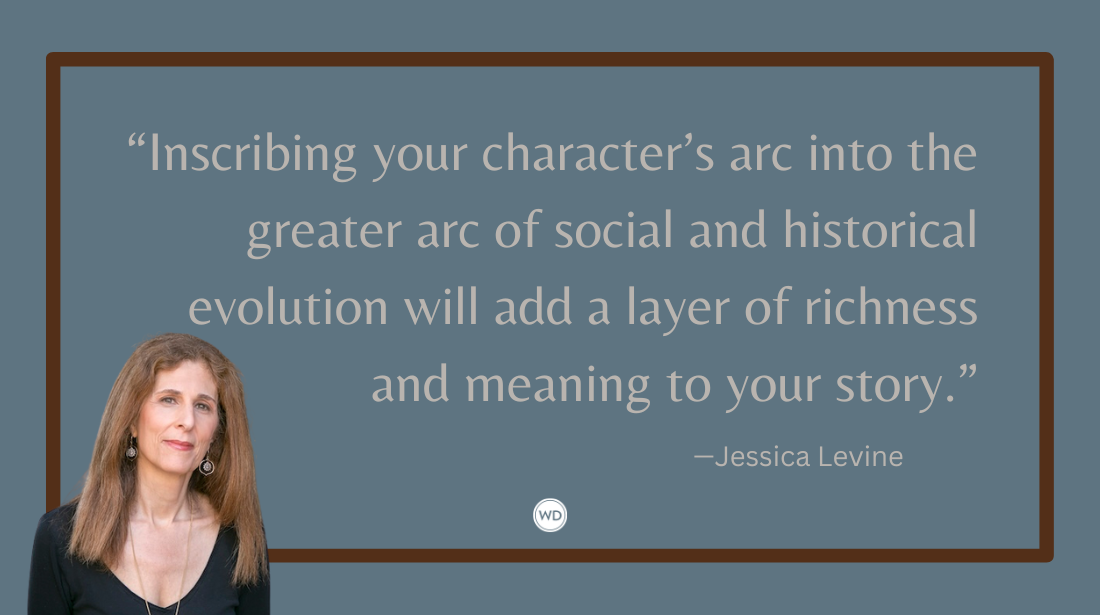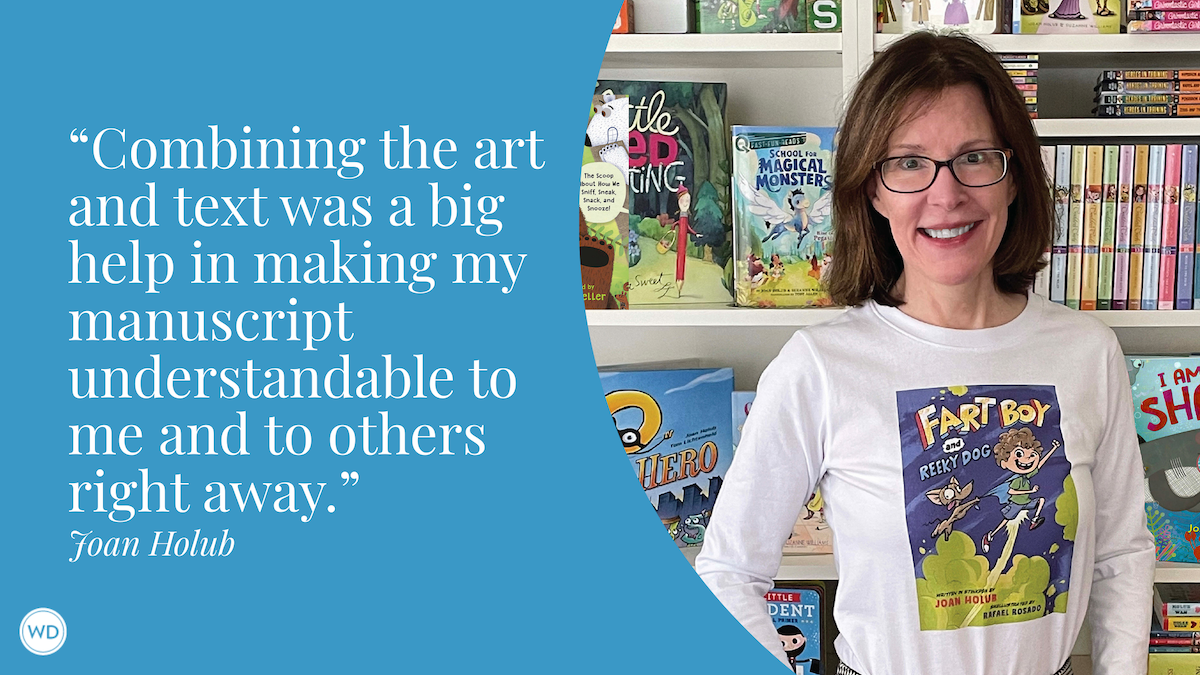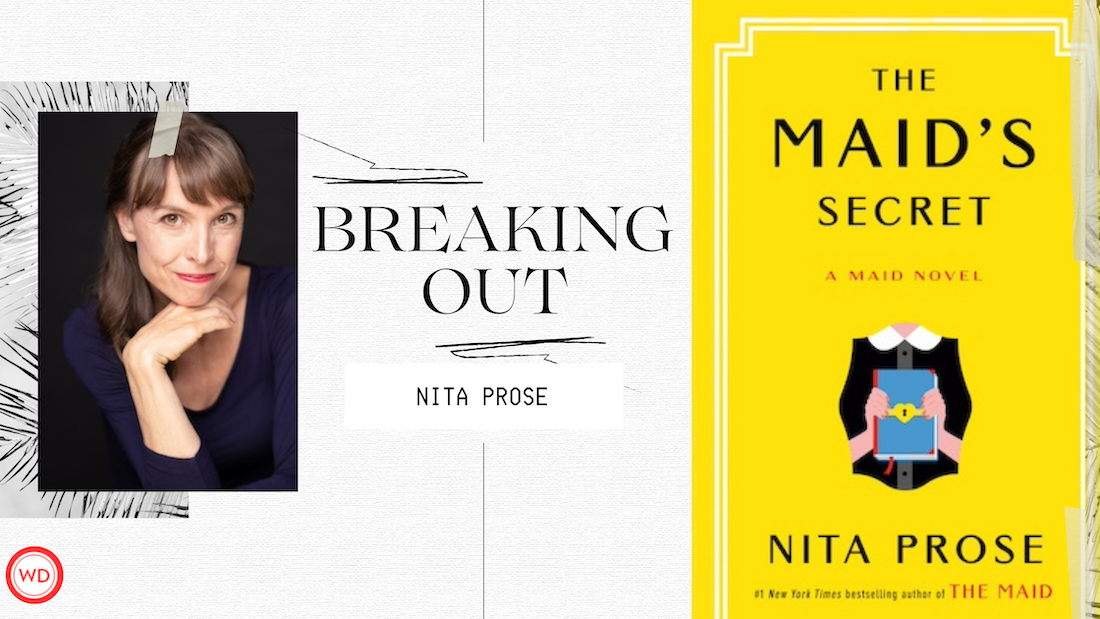Writing Better Banter: 4 Tips for Making Your Readers Laugh Out Loud
Writing realistic and funny dialogue between characters can reveal their chemistry, heighten the tension, and endear your readers to them. Here, author Kerry Rea shares 4 tips for writing banter between your characters.
If you ask an avid rom-com fan what they love most about the genre, chances are they’ll give one of two answers: A) the smoking-hot sex scenes or B) the laugh-out-loud banter. And while I love a steamy scene, I’m in the second camp.
In order for writers to make readers invested in our characters’ happily-ever-after, in order to make them care about the fact that there’s (gasp!) only one bed, we have important work to do. We need to make readers like—or at least root for—our love interests and their burgeoning relationship, and we need to demonstrate why these characters belong together.
And fun, swoon-worthy banter is an essential tool for making that happen. Here are some tips to help you (and your characters) develop an A+ banter game.
1) Listen to how people speak.
This is my #1 tip for learning to write dialogue well. You’re writing about people, so listen to people. Whether you’re waiting in line for coffee, hurrying through the airport, or wandering the cereal aisle at the grocery store, pay attention to how the people around you speak to one another. What words, tone, and body language do they use? How do they respond to each other?
Your characters are fictional, but in order for readers to care about them, they need to feel like real people. And they can’t feel real if they engage with each other in dialogue that sounds stilted or unnatural (unless, of course, they’re on a bad first date, because we’ve all been there!).
Yes, your characters are going to fire off clever comebacks and snappy retorts quicker than a real person would, and that’s necessary to write an entertaining story. But the closer attention you pay to the way people communicate, the more you’ll be able to write dialogue that sounds natural, real, and relatable. And if you feel awkward listening in, just remember, you’re not eavesdropping; you’re studying.
2) Keep it (mostly) good-natured.
Banter is supposed to make your characters and readers feel good. It’s playful, flirty, and fun, and while your characters should have free reign to tease each other, they shouldn’t tear each other down. After all, they like—or are starting to like—each other, and banter is a veiled way for them to explore those feelings.
Having A rib Character B about their reality TV obsession? Sure, yes, fun. Having Character B relentlessly mock Character A for their stage fright before a big presentation? No, thank you. Remember, your characters may start out guarded or even antagonistic, but they shouldn’t be mean. Very few readers will root for mean primary characters, let alone want to spend a whole book with them. So, keep the tension feisty, not ferocious.
3) Make it personal.
Part of what makes banter so fun is that it reveals something important: Your characters are paying attention—close attention—to each other. Perhaps one character overhears the other talking about a dorky hobby and teases them about it.
On the surface, your character is poking fun at their love interest for being a zealous Parkour champion. But underneath the whip-smart barbs, your character is revealing something important: I’m paying attention to you, love interest. I’m listening to what you say and learning what you like, and my breath catches every time you enter the room.
Take this excerpt from my rom-com Lucy on the Wild Side. In this book, my main character Lucy, a zookeeper, has to spend a summer working with Kai, the host and producer of a popular wildlife TV show. They get off on the wrong foot; Lucy thinks Kai’s obsessed with ratings, and Kai thinks she’s a stubborn workaholic who watches too much reality TV. When Lucy overhears Kai’s phone call, she can’t resist the opportunity to poke at him, and all bets are off when he can’t help but poke right back.
“That didn’t seem like a fun phone call,” I say, deciding that two can play at this game. “Poor thing, was it Prince William? Did he call to say you aren’t his very favorite boy anymore?”
Kai shakes his head. “Good try, but no. It was a producer from Fresh Air scheduling an interview for the fall.”
“Fresh Air with Terry Gross?” I ask, annoyed that I’ll have to skip an episode.
He grins. “That’s the one. I’m guessing you’re a fan? Well, good to know reality TV isn’t the only media you consume.”
I fix him with a benevolent smile. “I wouldn’t be so quick to criticize reality TV, since your show could technically be classified as such.”
His smirk disappears, and I mentally high-five myself for managing to hit a nerve. “On the Wild Side is an educational docuseries, Lucy,” he says tightly. “Let’s not compare it to The Kardashians.”
“I actually think you have a lot in common with the Kardashians,” I muse, thrusting the knife in deeper. “Your name starts with a K, for starters. And they’ve won an Emmy, too.”
“They haven’t.” Kai drops his hands from the back of his head and fixes me with a look that could melt whatever frozen Antarctic ice ridge he bragged about spending a week on.
“Yeah, I’m pretty sure they have.” I’m talking entirely out of my ass, but Kai’s lips are twisted like he’s sucking on a black cherry Warhead, so I wave a carefree hand at him and keep going. “Or maybe it was a Teen Choice Award. Oh well. They’re basically the same thing, right? Tomato, ta-mah–to.”
Kai clenches his jaw like he’s on the verge of a stroke, and even though Sam and Elle would seriously disapprove of my behavior, it’s too satisfying to stop once I’ve started.
IndieBound | Bookshop | Amazon
[WD uses affiliate links.]
What’s key here is that Lucy and Kai demonstrate that they’ve been observing each other pretty closely. They use things they’ve learned about each other, like Lucy’s fondness for reality shows and Kai’s mention of his relationship with the royals, to get under each other’s skin. Sure, they’re bickering, but what they’re actually revealing is that they listen to and care about the other one’s words, preferences, and behaviors. Through their dialogue, they demonstrate their awareness of how the other moves through the world.
4) Build toward something more.
Banter is fun, but on its own it isn’t enough to help your characters’ relationship journey reach a satisfying conclusion. Think of banter as the delicious appetizer that sets your palate up for a four-course meal; witty exchanges and flirty comments increase romantic tension, but beneath their lighthearted quips, your characters should be fully fleshed-out people with flaws, insecurities, and authentic struggles. And at some point, they need to share these deeper versions of themselves with each other. This is when you need to put the banter aside, at least temporarily, to let your characters have more complex, layered interactions.
In Lucy on the Wild Side, for example, Lucy and Kai both have big career dreams and complicated relationships with their moms. When they stop trading wisecracks and start revealing these hidden parts of themselves, their relationship deepens in a meaningful way. Part of what makes banter so enjoyable is readers’ anticipation that sooner or later, the characters will stop playing around and get serious. Banter is an important prelude to the emotional payoff readers receive when this finally happens, but without genuine conflict and vulnerability between your characters, your story won’t feel authentic.
So, there you have it: My foolproof guide to writing better banter. Now go forth, read widely, and practice! Because just like our stories, writers are a work in progress, and we need practice to make those stories come alive. But try not to stress too much; after all, writing—like a good round of banter—should be fun.
Kerry Rea is a 2017 and 2019 #Pitchwars mentee. Her work has appeared in Seventeen Magazine. She lives in Columbus, Ohio, with her husband, her son, and their four dogs. She has written two books, The Wedding Ringer and Lucy on the Wild Side.




